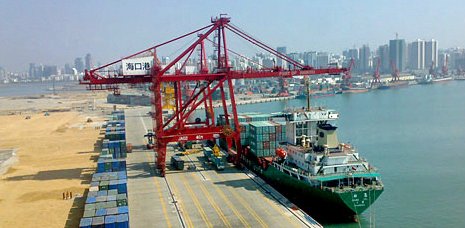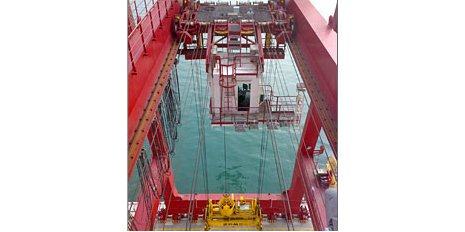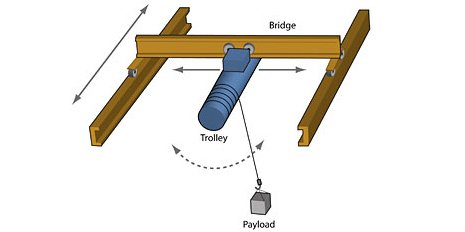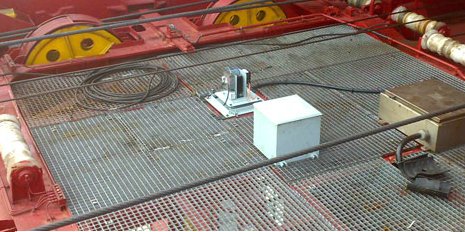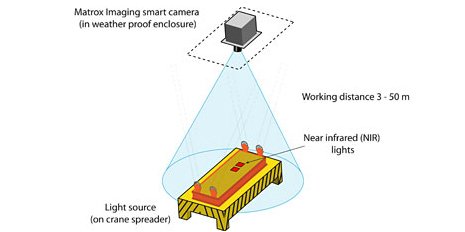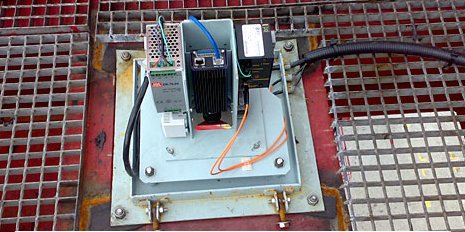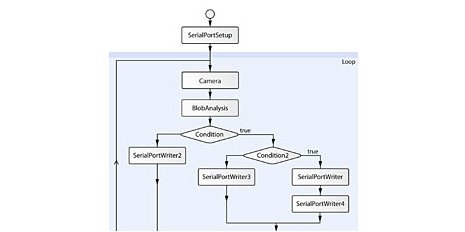Ship-to-shore (STS) container crane
One of the most significant investments in the port terminal system is the ship-to-shore crane. The ship-to-shore (STS) container cranes move cargo from the ship to ground transportation—a costly, time-consuming, and potentially dangerous activity.
STS container cranes are classified by their degrees of automation. Conventional cranes are manually operated. The operators are highly-skilled, but because they sit in crane cabins for long periods of time performing the same tasks, operators can experience fatigue and boredom. This inattention can result in accidents that injure dock workers, damage cargo, and delay load handling.
STS container crane anti-sway system
The payload is suspended from a trolley that moves along a horizontal girder (bridge). A spreader “catches” the container as it is moved from the ship to the transportation waiting on shore. In an effort to transfer cargo containers faster and more safely, an increasing number of port operators now require that cranes be equipped with automated sensing and control systems to control load sway and to ensure that the spreader is optimally positioned. The automated anti-sway system ensures that the crane operator is not solely responsible for controlling unwanted movement of cargo. This reduces the possible occurrence of accidents because of operator error, which includes a delayed and/or exaggerated response to sway. The latter can result in dangerous, uncontrolled swinging of payload.
Machine vision’s role in anti-sway systems
MicroView & LingZhi Image Tech Corporation (MVLZ) (Beijing, China) has developed an automated ship-to-shore anti-sway system that incorporates machine vision. The port’s bridge crane includes a machine vision system, a fiber optic communication link, Programmable Logic Controller (PLC)-based feedback control system, and an electronic control system.
The machine vision system is based upon a Matrox Iris smart camera. In addition to the smart camera, the system includes a 12 mm lens with a near infrared (NIR) pass filter, custom NIR lights, and cabling.
The Matrox Iris smart camera is mounted on the trolley, while the light sources on the spreader are used as markers. The camera grabs images of the markers continuously and calculates the center point of two markers in real time. This information is transmitted over an RS-232 link, itself converted to a fiber optic link (and then back to an RS-232 link) to reliably cover the long distance between the smart camera and PLC. The location of the center point is continuously provided to the PLC. The PLC gives commands to the electronic control system, which regulates trolley movement so that container sway is reduced.
The working distance from the smart camera to the markers on the spreader is between 3 m and 50 m. The view angle of the camera is 28°. The spreader should always be in the camera’s field of view. The system precision is 10 mm when the working distance is 50 m. The control frequency of the trolley is 20 Hz.
Smart camera-based vision system
A smart camera-based vision system is ideally suited for meeting the STS system’s precision and control frequency requirements. Ms. Xing Xiao, Technical Support Manager, MVLZ comments, “There is no space in the system for a traditional, PC-based vision system, plus the PLC only needs the markers’ positions for control. A smart camera can do all the work—grabbing, processing, and outputting the results via the RS-232 port.”
The sensor on the Matrox Iris smart camera can operate in the NIR range. Two custom NIR lamps are used as markers for imaging processing. “We chose NIR,” Ms. Xiao continues, “because it is immune to the effects of bad weather, like rain. A powerful light source is necessary to ensure that the markers are kept in the foreground, while everything else in the field of view is seen as background.”
The application was developed with Matrox Design Assistant, an integrated development environment (IDE) that is bundled with the smart camera. Design Assistant lets users create machine vision applications by constructing a flowchart instead of coding programs or scripts. “The smart camera software is very easy to use and does not require highly-skilled programmers. We simply initialize the serial port, grab the raw image, perform blob analysis, and write to the serial port,” explains Ms. Xiao.
Deployment
The ship-to-shore anti-sway system is used in port terminals in China, including Zhenjiang, Guangdong province and Haikou, Hainan province. Looking to the future, more and more port authorities are demanding that their ship-to-shore container cranes include an automated anti-sway system in their quest to process containers faster and more efficiently.
Link Matrox Smart-Cameras:
http://www.rauscher.de/...
VISION 2011
Halle 4 – Stand 4C15
RAUSCHER
Johann-G.Gutenberg-Str. 20
D-82140 Olching
Phone +49 81 42 / 4 48 41-0
Fax +49 81 42 / 4 48 41-90
E-Mail: info@rauscher.de
www.rauscher.de
